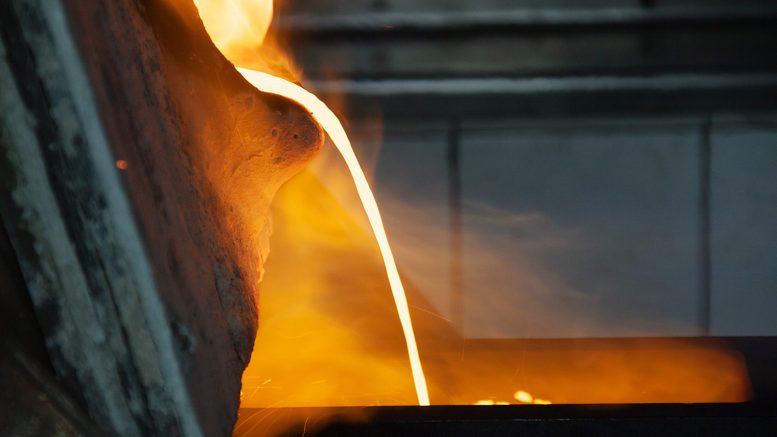Only newsletter writers and commodity analysts see the future with perfect clarity, the rest of us must muddle along with probabilities and best guesses.
A strategist was quoted recently in The Northern Miner as having a US$5,000 per ounce two-year outlook on gold. He might be gifted with foresight but, for mere mortals, Doris Day explained it perfectly in 1956 with what became her signature song, Qué será, será; “Whatever will be, will be, the future’s not ours to see.”
Predicting the future is complicated by the unknown unknowns. This phrase leapt into common usage after the U.S. Secretary of Defense, Donald Rumsfeld, famously used it in 2002 when explaining the lack of weapons of mass destruction in Iraq (although the concept of unknown unknowns was actually created in 1955 by two American psychologists, Joseph Luft and Harrington Ingham).
We might not be able to actually see what is coming but, from what we can deduce, the immediate future doesn’t seem likely to be great. We are only halfway through the third quarter of 2022 and optimism in the mining sector is fading. This follows two quarters of contraction in U.S. gross domestic product and falling global demand for raw materials.
ANZ has echoed the mining industry’s concern that slowing economic growth is “outweighing supply concerns and depleted inventories.” In its latest Commodity Call newsletter, the Australian bank added that “China’s demand was a drag for much of the second quarter, but now fears of a global recession have gripped the market.”
Although ANZ believes that increased spending on infrastructure in China will stabilize markets, the next few months look bumpy. Metals price conditions for 2023 are extremely difficult to predict despite the knowledge that many of our metals are ‘future proofed’ because they are in short supply for the necessary work to deliver net-zero carbon emissions and the mooted energy transition.
We can, however, make plans for this uncertainty. In ‘An Ideal Husband’, Oscar Wilde (1854-1900) told us as far back as 1894 that to “expect the unexpected shows a thoroughly modern intellect”.
Recent national examples of the unexpected include water shortages and wildfires here in the U.K., wild winds at this year’s Diggers & Dealers conference in Western Australia, and a Canadian winning a stage of the Tour de France cycle race (Hugo Houle was the first to do so in 34 years).
Also unexpected is the performance of gold. It is supposed to be an easy beast to predict; gold likes a weak dollar, political and economic turmoil, and low rates of interest. The precious metal is denominated in U.S. dollars so inevitably appears stronger when that currency is weak, and is considered a safe haven in troubled times. Low interest rates reduce the cost of holding gold, which pays no dividends, and restrict the appeal of yield-producing sovereign debt, which is gold’s most important competitor as a haven.
Although the U.S. dollar has been strong in 2022, and interest rates are rising from a low base, we are experiencing the other gold-favourable conditions in spades and earlier this year precious-metals analysts were queuing up to forecast higher gold prices. Instead, money managers turned net short of gold in mid-July for only the fifth time since 2006.
This is a properly rare position. Out of the 841 weeks, to end-July, that the Chicago-traded gold futures and options series has been measured, managed money has been betting on gold weakness for a total of only 37 weeks. Fortunately, the World Gold Council reminds us that this particular dark cloud has a silver lining; namely that these unusual net short positions are historically associated with positive gold returns over the following three to 12 months.
For miners, there are many potential surprises to be faced in addition to unexpected commodity prices. These include the macro environment, which encompass swings in economic activity, inflation, currency exchange rates and the related political implementation of new environmental, monetary and fiscal policy. Colombia is the latest example of the latter with the announcement of export taxes on oil, coal and gold (10% above US$400 per ounce FOB).
At the operating level, miners must plan for geological surprises and fluctuating stakeholder sentiment. As we saw at Diggers & Dealers, contingencies must also be made for adverse weather conditions.
It seems, right now, to be an uphill battle for miners of almost any persuasion. Nevertheless, although we can’t see (or even properly predict) the future, always remember that uplift is greatest when the wind is against you.
Dr. Chris Hinde is a mining engineer and the director of Pick and Pen Ltd., a U.K.-based consulting firm. He previously worked for S&P Global Market Intelligence’s Metals and Mining division.


Be the first to comment on "The View from England: Unsighted, so expect the unexpected"